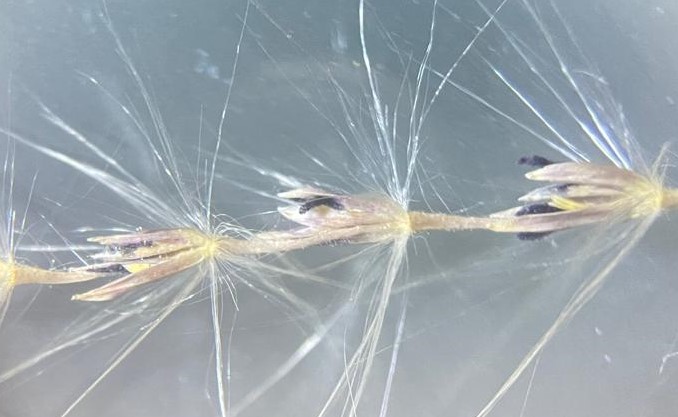Floral use of the spike or inflorescence of sugar cane
Abstract
Sugar cane is a perennial grass, with annual growth, which develops in the form of bushes, whose aerial part is made up of stems, leaves, inflorescences and seeds. Once the cane is mature, it is cut and industrialized to obtain sugar as the main product and the by-products molasses and bagasse. However, another product derived from sugar cane that can be marketed is the spike, used in floral arrangements as still life. 30 spikes of sugar cane were cut, and 10 bunches of three spikes each were made; then they were placed in vases inside a house. The quality of the flowers was qualitatively measured from 1 to 10 for 12 months. Over time, the quality of the spikes decreased, maintaining a good quality with a minimum score of 8 during the first 6 months; however, after 10 months, they can still be effectively used in floral arrangements. Therefore, it is concluded that the spike or flower of sugar cane has high possibilities of being used as a floral arrangement or as a still life.
References
Estrada Elvires AC. 2021. Análisis de la competitividad de flores mexicanas en el mercado estadounidense mediante el método de ventaja comparativa revelada. Tesis de Maestría en Ciencias en Economía Agrícola y de los Recursos Naturales. Universidad Autónoma Chapingo. México.
https://repositorio.chapingo.edu.mx/items/d8e4d0a1-7d94-49b8-a105-3d3170d9e17e
INEGI (Instituto Nacional de Estadística y Geografía), 2019. Aspectos geográficos del Estado de Nayarit. Instituto Nacional de Estadísticas, Geografía e Informática. México.
https://www.inegi.org.mx/contenidos/app/areasgeograficas/resumen/resumen_18.pdf
James G. 2003. Introduction to sugarcane. In: James, G. Sugarcane. Oxford: WileyBlackwell. Pp. 1-19.
Marques MO, Marques TA, Tasso Júnior LC. 2001. Tecnologia do açúcar. Produção e industrialização da cana-de-açúcar. Jaboticabal: Funep. Pp. 166.
Moreno Noe. 2022. Caña de azúcar (Saccharum officinarum). https://slideplayer.es/slide/11122265/
Moreno Noe. 2022. Partes de la flor de Caña de azúcar (Saccharum officinarum). https://images.slideplayer.es/40/11122265/slides/slide_13.jpg
Mozambani AE, Pintos AS, Segato SV, Mattiuz CFM. 2006. História e morfologia da cana-de-açúcar. In: Segato, S.V.; Pinto, A.S.; Jendiroba, E.; Nóbrega, J.C.M. Atualização em produção de cana-de-açúcar. Piracicaba. Pp. 11-18
Ramírez Hernández JJ, Avitia-Rodríguez JA. 2017. Floricultura mexicana en el siglo XXI: su desempeño en los mercados internacionales. Revista de Economía. 34(88):99-122.
https://www.scielo.org.mx/scielo.php?script=sci_arttext&pid=S2395-87152017000100099
Tejeda-Sartorius O, Arévalo-Galarza ML. 2012. La floricultura, una opción económica rentable para el minifundio mexicano. Agroproductividad. 5(3):11-19. https://revista-agroproductividad.org/index.php/agroproductividad/article/view/404





